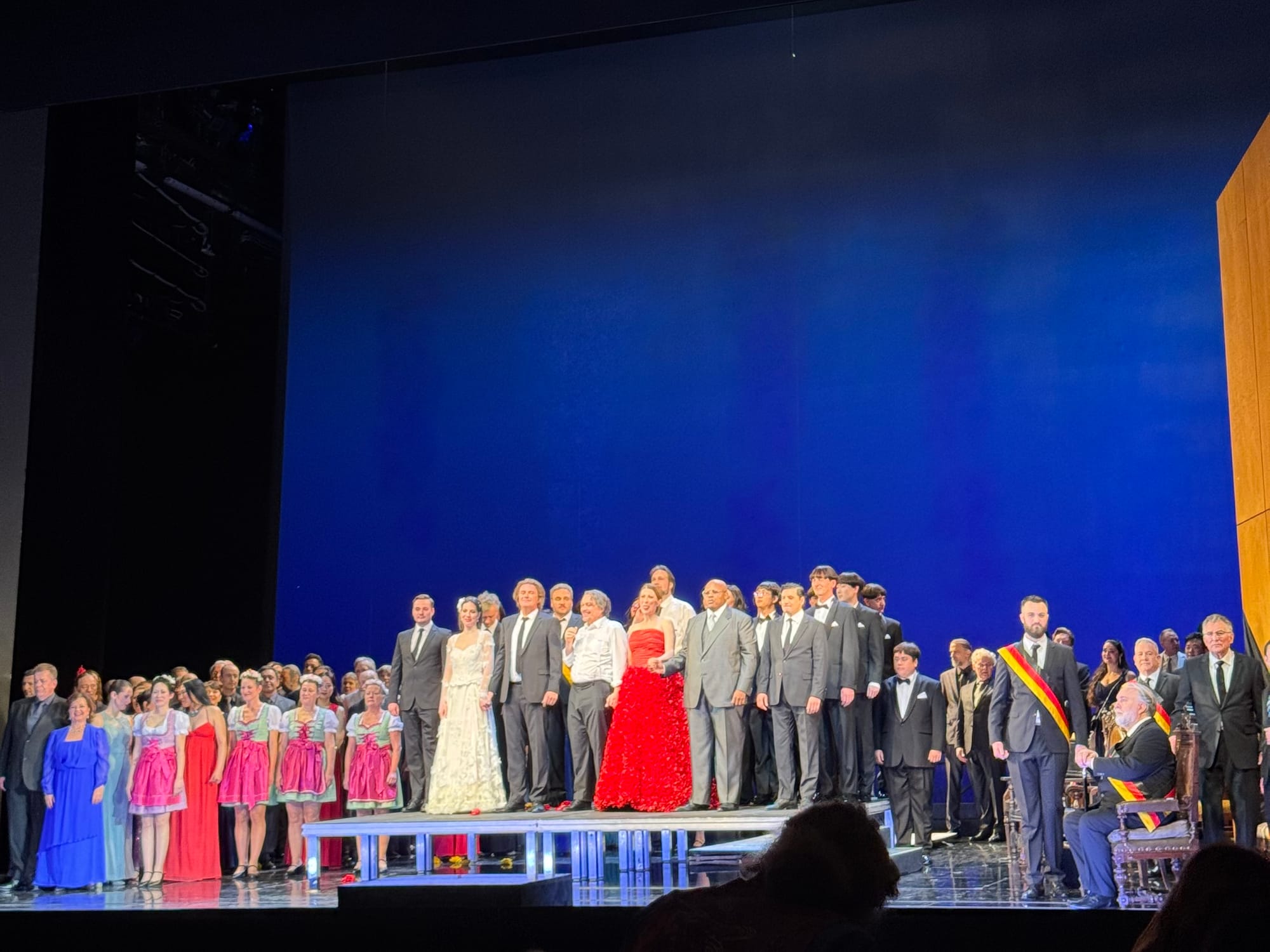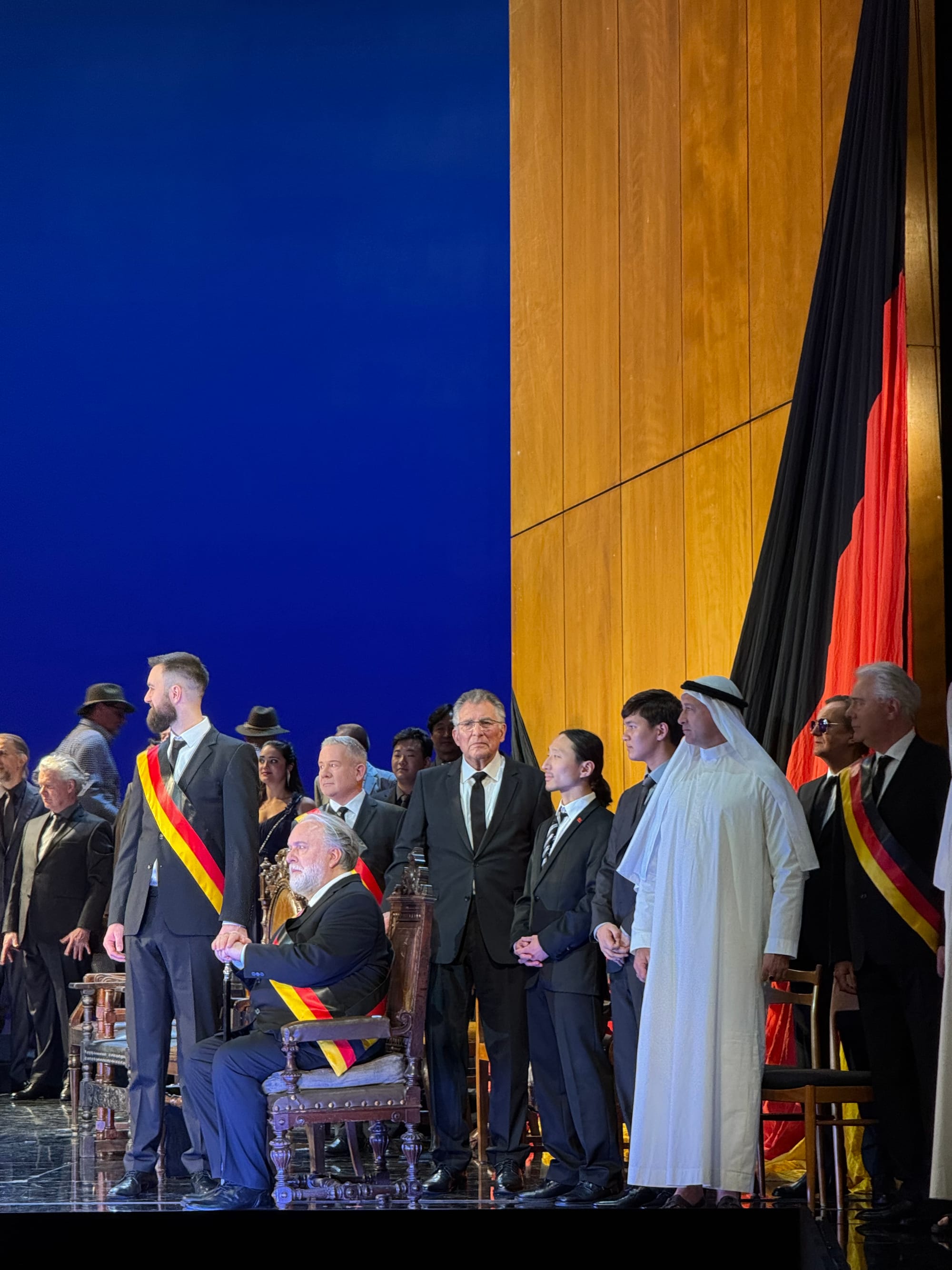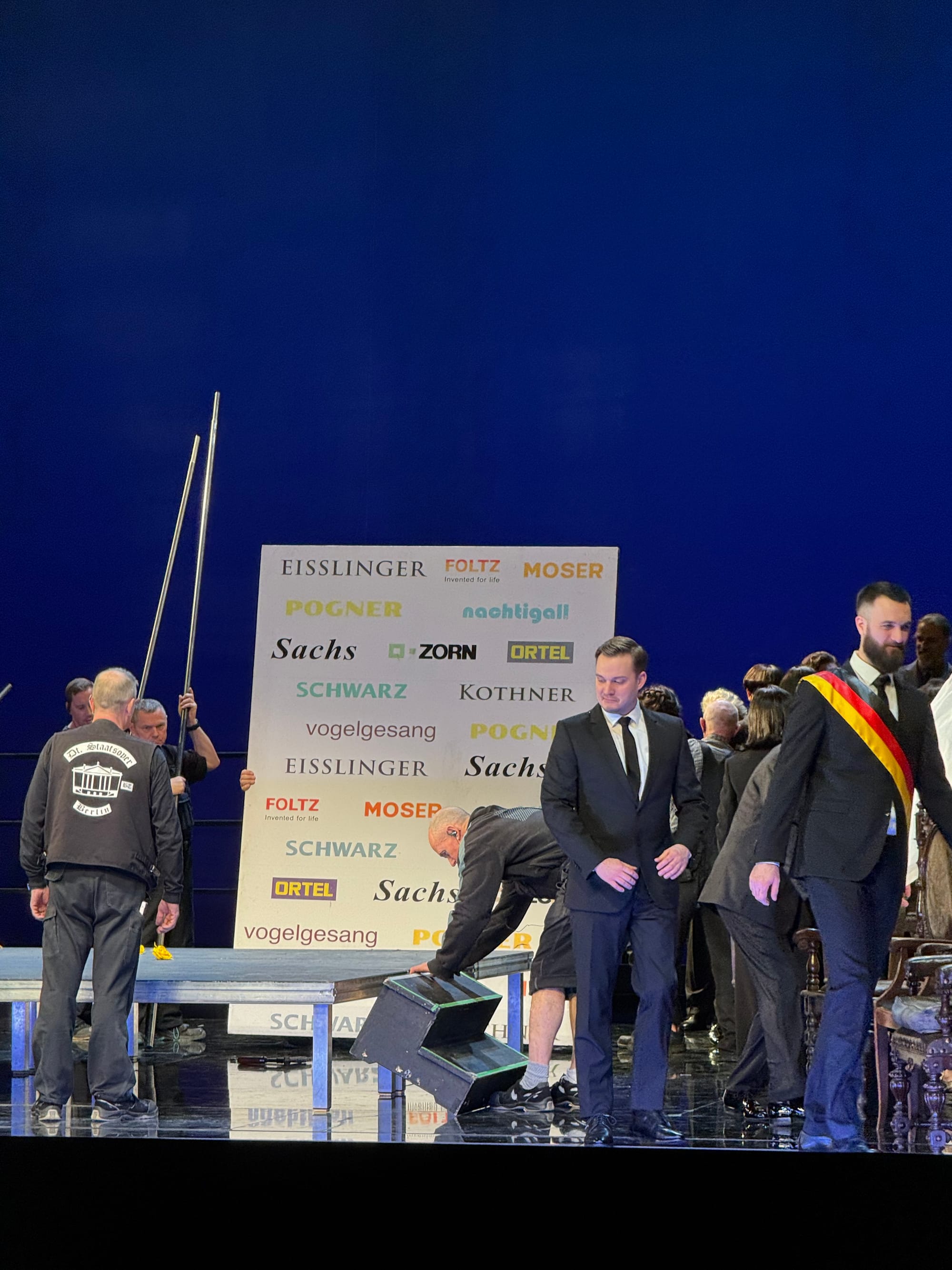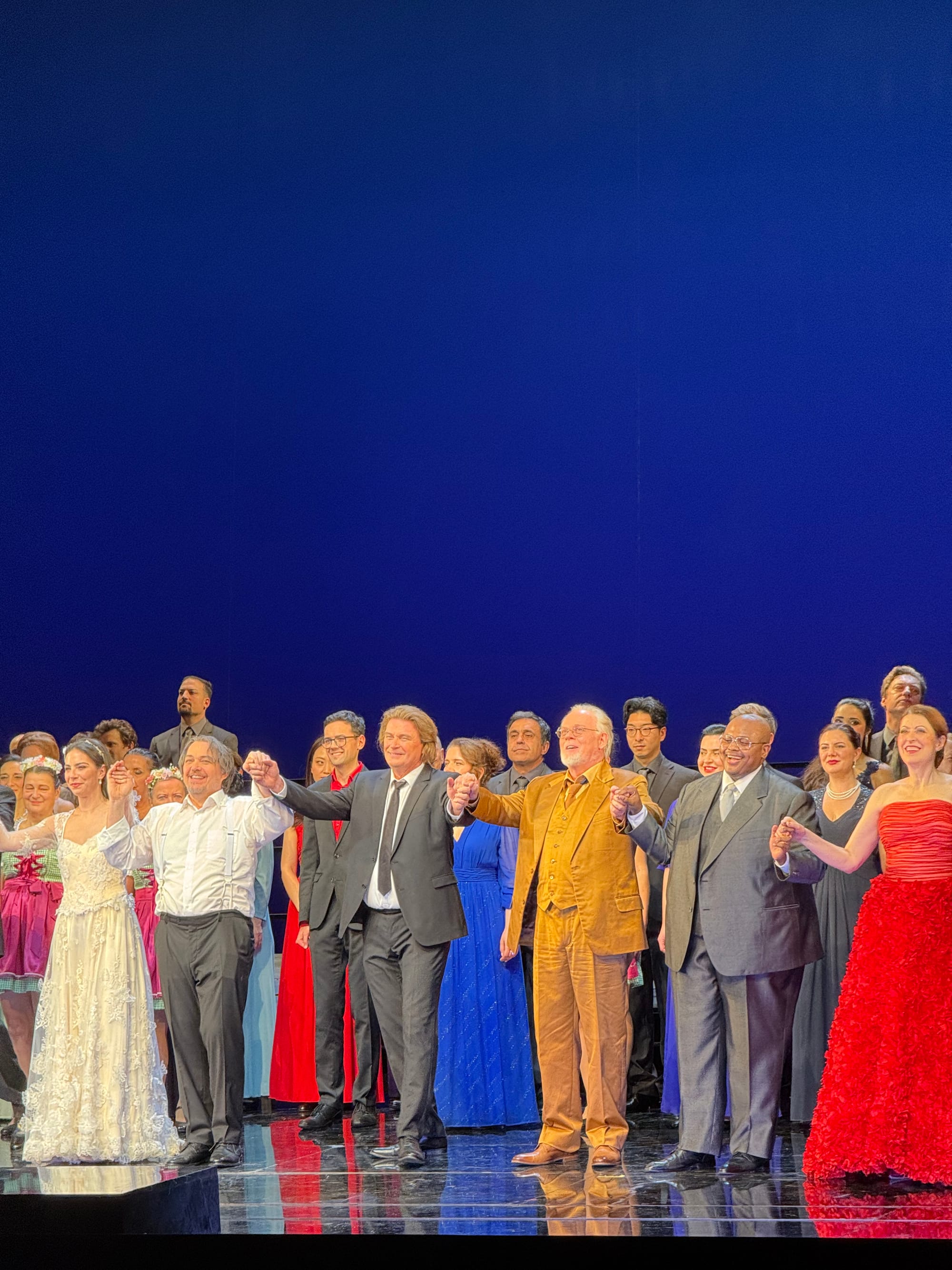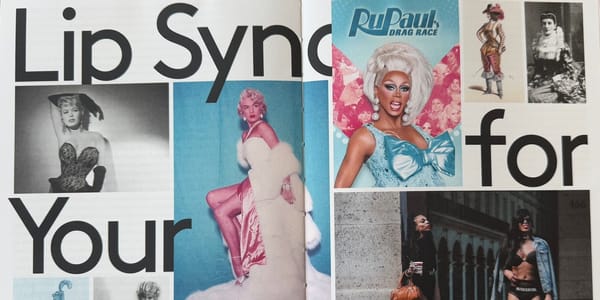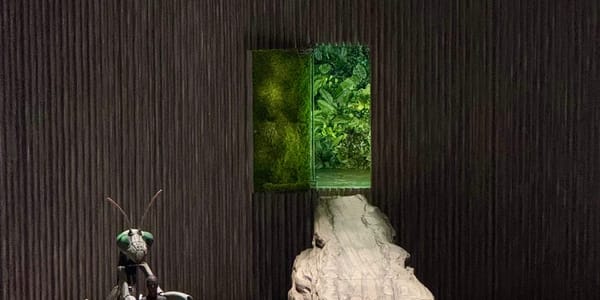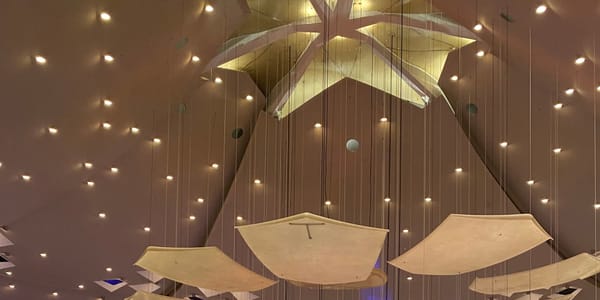Die Meistersinger von Nürnberg at Staatsoper Berlin
This production is a time capsule of 2010s Germany, brimming with the optimism and unity of a nation celebrating its post-reunification identity. Yet viewed through the lens of 2024, it also serves as a stark reminder of how fragile that optimism has proven.
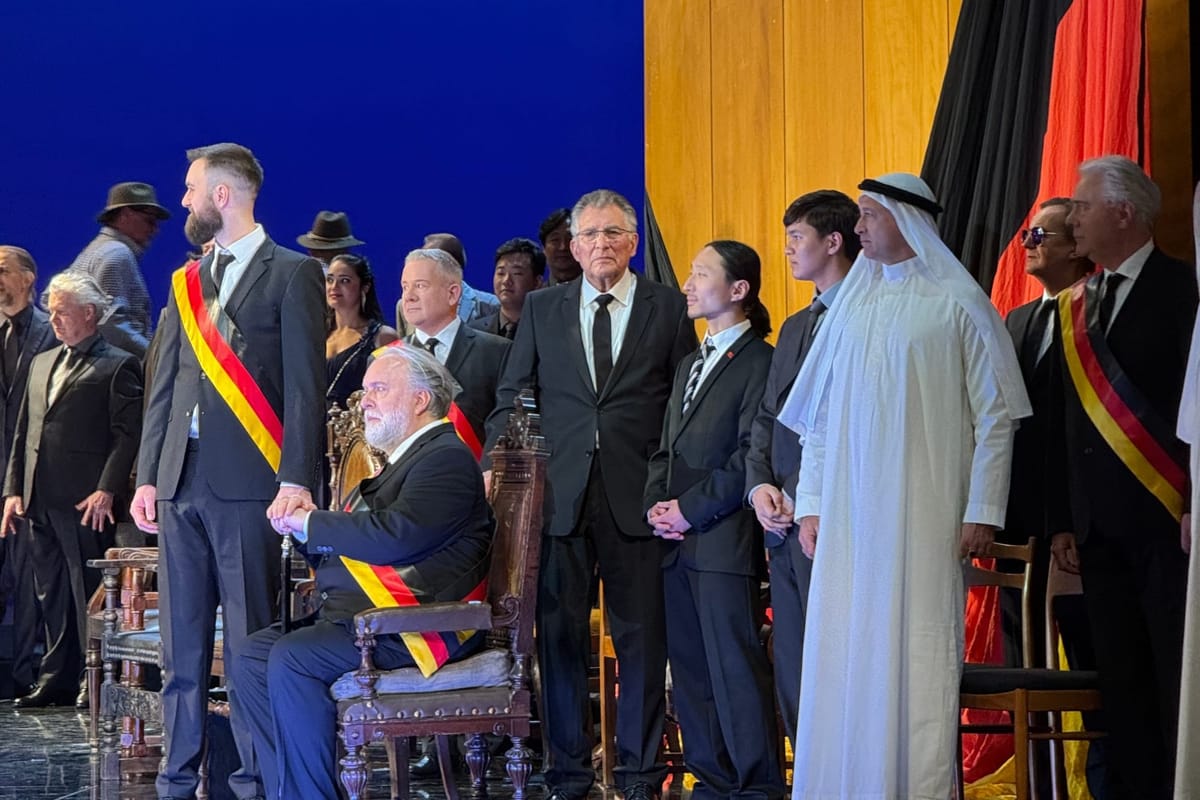
⭐️⭐️
🎭 Die Meistersinger von Nürnberg
🎶 Richard Wagner
💭 Andrea Moses, 2015
🏛️ Staatsoper Unter den Linden
🗓️ 02.12.2024
“WAS DEUTSCH UND ECHT, WÜSST’ KEINER MEHR, LEBT’S NICHT IN DEUTSCHER MEISTER EHR’”
The production of Wagner’s DIE MEISTERSINGER VON NÜRNBERG at Staatsoper Berlin by Andrea Moses is as ambitious as the opera itself—a sprawling, 4½-hour exploration of artistic freedom, tradition, identity and belonging. Created in 2015 in anticipation of commemorating a quarter-century of German reunification, this staging is a deeply patriotic, visually bold, and occasionally discomforting take on Wagner’s only comical opera.
Musically, the production is masterful. The cast excels across the board, delivering Wagner’s complex score with precision and emotional resonance—as does the orchestra, under the baton of Alexander Soddy. On a visual level, the production plays with a range of recognizable and quaint German vibes: rotating Mercedes-Benz stars, corporations run by old white men, mid-century wood paneling, modernist church interiors, quarreling football fans from rival teams.
At the core of this production lies an unmissable celebration of German unity and identity. The stage is awash in black-red-gold flags, balloons, banners, sashes, evoking the optimism of 2010s Germany—a time when the country was still on a high from its “Sommermärchen” World Cup, when it embraced Angela Merkel’s “Wir schaffen das” stance on immigration, and when far-right movements like the AfD were still dismissed as politically irrelevant fringe voices. Fast-forward to today, with war in Europe, mounting political instability and economic uncertainty, and the electoral successes of right-wing post-fascist populism, this same visual palette feels far less celebratory.
The production’s climax underscores this tonal shift. The finale, filled with German flags and a lederhosen-clad brass-band celebration, aims for unity but lands differently in today’s sociopolitical climate. Moses’ choice to demonstrate how imperial flag-waving “Reichsbürger” (in front of the now controversially rebuilt former imperial palace no less) are excluded from the on-stage festivities initially feels like a hopeful signal for German political health. Yet in 2024, when these movements are represented in Parliament and poll at nearly 20%, their exclusion seems more symbolic than effective, offering little solace against the backdrop of rising nationalism across the political spectrum.
Adding complexity is a fleeting appearance of a pride flag at the end of Act II, heavily featured in promotional materials (in contrast to the jump scare plethora of German flags) but only briefly visible on stage. This moment lies somewhere between queerbaiting and pinkwashing, emblematic of broader societal trends where LGBTQ+ visibility is co-opted for narratives of progress without substantive inclusion—a fleeting nod to diversity that feels disappointingly flat.
On a narrative level, Wagner of course leaned into his own autobiographical subtext. The opera, centered on a young artist’s struggle to challenge the rigid rules of the Meister guild, echoes the composer’s own self-perception as a revolutionary within the artistic establishment. However, the opera’s nationalist overtones, only amplified by the back-red-gold paraphernalia, remain what I can only describe as “icky”. The production blurs the line between celebrating and critiquing these ideas. Moses’ interpretation, while bold and optimistic in 2015, feels almost uncomfortable today—an artifact of its time that inadvertently underscores how much has changed in the intervening years, and confirming that opera productions can, in fact, age badly.
Ultimately, this MEISTERSINGER production is a time capsule of 2010s Germany, brimming with the optimism and unity of a nation celebrating its post-reunification identity. Yet viewed through the lens of 2024, it also serves as a stark reminder of how fragile that optimism has proven. It’s a fascinating, if disquieting, reflection on how art and society inform and reinterpret each other over time.

